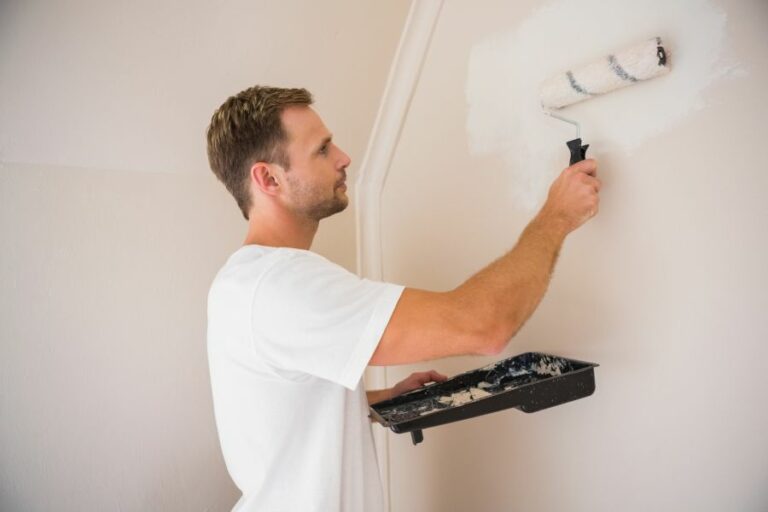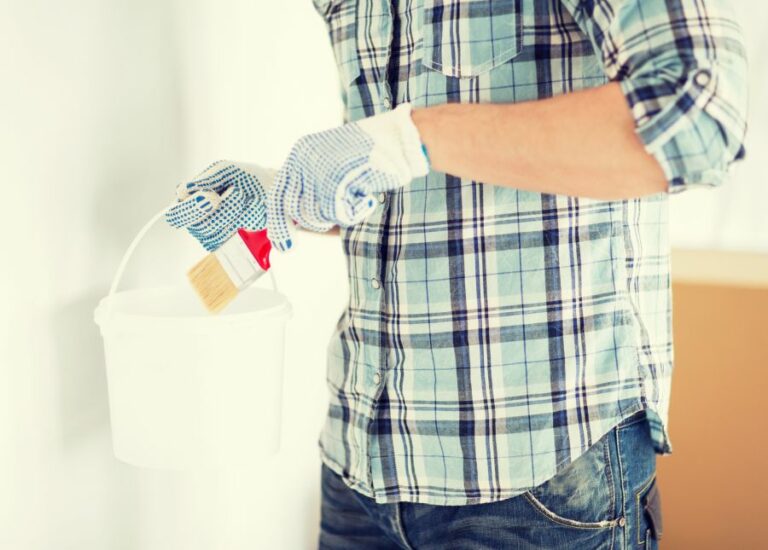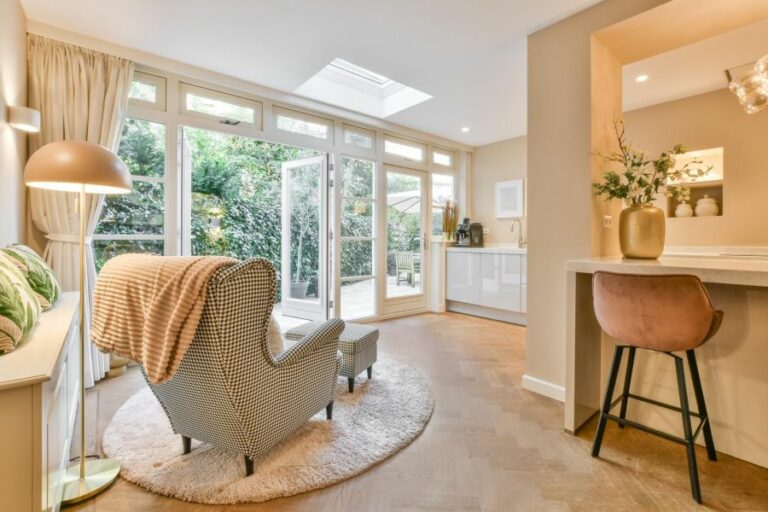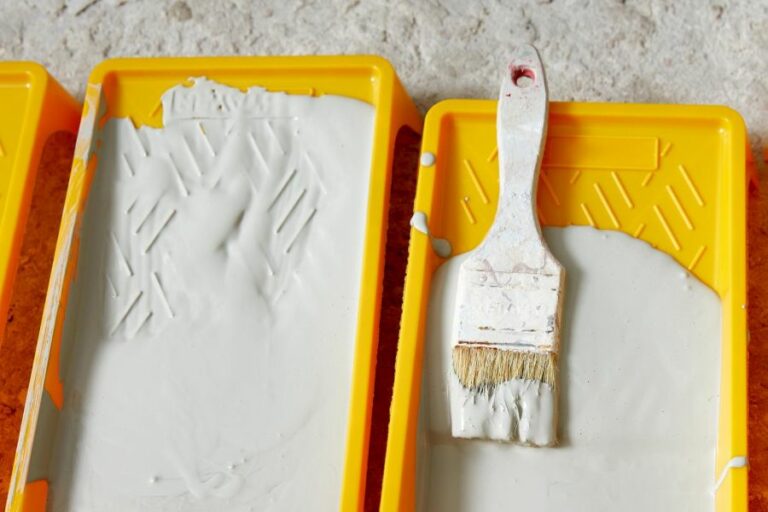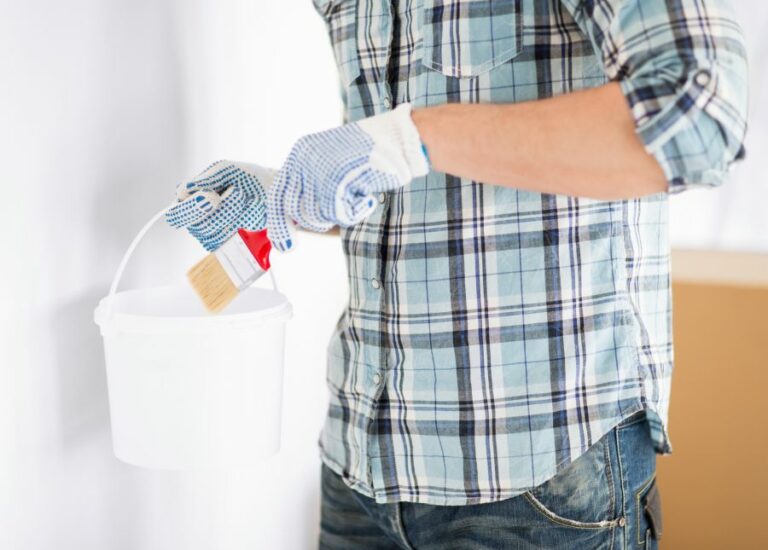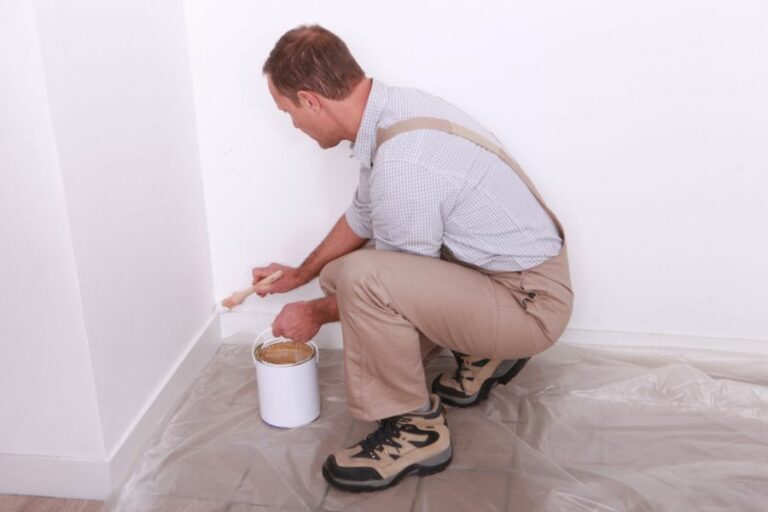Chalk Paint For Indoor Furniture, 25 Things You Should Know
Are you tired of seeing the same old indoor furniture in your home and wanting to spruce it up? No problem, I’ve got you covered. Chalk paint is a fantastic and versatile solution that has been highly popular among DIY enthusiasts and interior decorators who want to transform and revamp furniture, creating a unique and personalized living space.
Chalk paint for indoor furniture:
Chalk paint is a versatile and popular choice for indoor furniture due to its easy application, minimal preparation, and ability to create vintage effects. It adheres well to various surfaces and dries quickly. High-quality paint, proper application techniques, and appropriate finishing methods are essential for a durable, stylish result. Regular maintenance ensures the longevity of chalk-painted furniture.

Elevate your indoor furniture with chalk paint for a unique and timeless finish! Discover techniques, color options, and easy-to-follow steps to transform your pieces. Unleash your creativity. Read on!
Contents
- 1 Chalk Paint: Ideal Choice for Interior Furniture
- 2 Using Chalk Paint on Indoor Furniture: Is It Safe?
- 3 Exploring Chalk Paint Drawbacks for Furniture
- 4 Chalk Paint vs. Regular Paint: Which is Best for Furniture?
- 5 Furniture Makeover: Is Chalk Paint a Good Option?
Chalk Paint: Ideal Choice for Interior Furniture
Chalk paint is an excellent choice for a variety of indoor furniture projects. Its unique properties allow for a versatile, durable, and stylish finish on any piece.
• Benefits of Chalk Paint
– Easy Application
One of the most notable benefits of using chalk paint is the ease of application. Unlike other paints, there is minimal to no need for sanding or priming the furniture beforehand. This makes the process quicker and less labor-intensive.
– Versatility
Chalk paint is suitable for almost any type of furniture or material, including wood, metal, laminate, and even fabric. Its thick and opaque coverage allows it to adhere and cover well, regardless of the surface.
– Distressed and Vintage Effects
Chalk paint’s matte finish and texture create a vintage or rustic appearance that is highly sought after in interior design. Additionally, it is easy to distress (remove some of the paint) to reveal the underlying layers, adding depth and character to the piece.
– Quick Drying
Chalk paint dries quickly, usually within an hour or two. This fast drying time allows for multiple coats to be applied in a short period, and projects can be completed quickly.
• Preparing and Applying Chalk Paint
– Choose the Right Paint
While there are many brands available, it is essential to select high-quality chalk paint for the best results. Annie Sloan’s chalk paint is a popular choice because of its consistency, coverage, and available color options.
– Prepare Furniture
Although minimal preparation is needed, it is still important to clean the furniture thoroughly. Remove dirt, debris, and any loose or peeling paint. If the existing finish is glossy or slick, lightly sand the surface to ensure proper adhesion of the chalk paint.
– Application Techniques
Chalk paint can be applied using brushes, rollers, or even a spray gun. Brushes, such as natural bristle or synthetic bristle round brushes, are most common and create a textured finish. Rollers can be used for larger areas and smoother finishes, while spray guns provide the most even coverage.
Apply the paint in thin, even layers, never allowing the brush or roller to become too dry. It is better to apply multiple thin coats than one thick coat.
– Sanding Between Layers
If a smooth finish is desired, sanding between layers with fine-grit sandpaper (320 to 400 grit) is recommended. This step removes any brush strokes and creates a more polished look.
• Finishing and Protective Options
– Clear Wax
Applying a clear furniture wax after the final coat of chalk paint is one of the most popular finishing methods. Wax maintains the matte appearance and adds a layer of protection to the furniture. It is essential to use high-quality wax, such as those specifically designed for chalk paint.
– Dark Wax
Dark wax can be applied over the clear wax to create an aged, antiqued look. Apply sparingly and buff well, focusing on areas that would naturally see wear and tear or have more profound details.
– Topcoat or Sealer
If a higher level of protection or a more durable finish is needed, consider applying a water-based acrylic topcoat or sealer after the final coat of chalk paint. This option will create a more satin or glossy finish, so it depends on the desired look.
• Maintenance and Upkeep
The longevity and durability of chalk-painted furniture depend on proper care and maintenance. Regular dusting and cleaning with a damp cloth will keep the surface looking fresh. Avoid using chemical cleaners, as they may damage the paint or wax finish.
In the event of any damage or wear, chalk paint can be easily touched up or recoated. Regular waxing or applying a new topcoat can also help maintain and protect the finish.
• Conclusion
Chalk paint offers a unique and versatile way to transform and revitalize indoor furniture. Its ease of use, quick-drying capabilities, and vintage appearance make it a popular choice for DIY enthusiasts and professionals alike.
With proper preparation, application, and maintenance, chalk-painted furniture can provide a stylish and long-lasting addition to any space.
Using Chalk Paint on Indoor Furniture: Is It Safe?
Chalk paint is a popular choice for furniture refinishing projects due to its versatility and forgiving nature.
• Benefits of Chalk Paint
Chalk paint possesses various properties that make it ideal for furniture refinishing projects. These benefits include:
– Easy to Use
Chalk paint can be applied to most surfaces without the need for sanding or priming. This makes it a beginner-friendly option, allowing even those with no experience in painting to achieve professional-looking results.
– Quick Drying
As water-based paint, chalk paint dries quickly, usually within 30 minutes to 1 hour. This allows you to complete your project in a shorter amount of time when compared to oil-based paints, which can take days to dry.
– Low Odor
Chalk paint has a low odor, making it suitable for indoor use. The absence of strong fumes enables you to work in a well-ventilated room without causing discomfort or requiring the use of respirators.
– Easy Distressing
The paint’s unique texture and composition allow for easy distressing. This feature enables you to create a vintage, aged look by simply sanding down the paint after it has dried.
• Chalk Painting Furniture Indoors
– Prepare the Area
Before starting your painting project, ensure that your workspace is clean, organized, and well-ventilated. Place a drop cloth or plastic sheet on the floor to catch any drips and protect your surfaces from paint.
Additionally, gather all materials needed, such as paintbrushes, rollers, paint trays, and chalk paint, to minimize disruptions during the process.
– Clean the Furniture
Cleaning the furniture is an essential step to ensure proper adhesion of the chalk paint. Using a damp cloth and mild soap, remove any dirt, dust, and grime from your piece of furniture. Following this, allow the item to dry completely.
– Applying the Chalk Paint
When applying chalk paint, it is recommended to use a high-quality brush or roller for the best results. Dip the brush into the paint, removing any excess before applying it to the furniture in thin, even coats.
Following the manufacturer’s instructions, allow the paint to dry fully between coats. Most projects will require 2-3 coats, depending on the desired opacity and richness of the color.
– Distressing the Finish (Optional)
If you desire a distressed, aged look for your furniture, lightly sand down the paint with fine-grit sandpaper once it has fully dried. Focus on areas that would typically experience wear, such as edges and corners.
– Sealing the Paint
To protect your newly painted furniture, apply a clear wax or polyurethane sealer. This will help to shield the surface from scratches, stains, and daily use. Follow the manufacturer’s instructions for proper application and drying times.
• Helpful Tips and Recommendations
- Choose high-quality chalk paint from reputable brands, such as Annie Sloan or Fusion Mineral Paint.
- When applying the paint, use long, sweeping brush strokes to reduce visible brush marks.
- If you are working with a roller, opt for a low-nap roller to minimize texture.
- Allow the paint to dry and cure fully before using the furniture to prevent premature wear or damage.
- For further guidance on chalk painting furniture, consult resources from educational websites, such as HGTV or The University of Kentucky: Cooperative Extension.
In conclusion, using chalk paint is an excellent option for refinishing furniture indoors, thanks to its ease of use, quick drying time, and low odor. With proper preparation and application, you can transform your furniture into a unique and charming piece that will enhance your living space.
Question | Answer |
|---|---|
Can you chalk paint furniture indoors? | Yes, chalk paint can be used on furniture indoors. It is odorless and dries quickly, making it suitable for indoor use. However, ensure proper ventilation and protect the surrounding area from paint splatters when painting. |
Exploring Chalk Paint Drawbacks for Furniture
Chalk paint, a popular choice for many DIY projects, has gained popularity in recent years due in part to its ability to refinish furniture without the need for sanding or priming. While chalk paint can offer numerous advantages, it also has its share of disadvantages.
– Difficulty in Achieving a Smooth Finish
One of the main disadvantages of using chalk paint is that achieving a smooth finish can be challenging. Chalk paint is known to produce a textured look, which can be desirable for some projects.
However, if you prefer furniture that has a glossy, modern look, then chalk paint may not be the best choice. The University of Chicago explains that the natural composition of chalk can create a porous and uneven finish.
– Limited Color Choices
Chalk paint is typically available in a limited range of colors, making it difficult for those with specific color preferences. Although it is possible to mix custom colors, this process can be time-consuming, and obtaining consistent results across multiple projects can be difficult.
– More Coats Required for Full Coverage
Chalk paint is known for its thick consistency, which often allows it to cover surfaces with just one coat. However, in some situations, multiple coats may be necessary to achieve the desired level of coverage.
This is particularly true when painting over dark stains or woodgrain, as it may require three to four coats to cover the surface fully.
– Durability Concerns
Another major disadvantage of chalk paint is its lack of durability compared to other paint options. Although chalk paint adheres well to surfaces, it is more prone to scratches and wear. This means that if the furniture or object is frequently used or moved, then using chalk paint may not be the best choice.
– Need for Sealing
Chalk paint requires sealing with wax or a protective topcoat to ensure that the painted surface is protected from daily wear and tear. While sealing is typically a simple process, it does add an additional step to the painting process.
Furthermore, wax seals need to be reapplied over time to maintain protection on the painted surface.
– Longer Drying Time
Chalk paint has a longer drying time compared to other types of paint, which can potentially slow down your painting process. This longer drying time can be particularly inconvenient if you are painting a large piece of furniture or working with limited space.
– Cost Considerations
Chalk paint tends to be more expensive than other forms of paint due to its specialized nature and smaller market share. Although some more affordable chalk paint options exist, the price may still be a significant factor for those working with a limited budget.
– Environmental Concerns
Chalk paint may contain VOCs (Volatile Organic Compounds), which can be harmful to both human health and the environment. While some eco-friendly, low-VOC chalk paint options are available, they may not be as readily accessible as conventional options.
• Recommendations and Alternatives
Given the disadvantages of chalk paint, it is essential to consider your specific needs and desired outcome when deciding whether to use chalk paint for a project.
If achieving a smooth, modern finish is important, then using latex or enamel paint may be more suitable. This type of paint will offer better durability and a wider range of color options.
For those seeking the matte, distressed finish that chalk paint provides without the disadvantages mentioned above, consider using milk paint. Milk paint is more eco-friendly and has a smoother finish while still providing the desired vintage look.
In conclusion, chalk paint can provide beautiful results when used in the right context. However, understanding its limitations and weighing the disadvantages is essential when deciding whether chalk paint is the best choice for your project.
Chalk Paint vs. Regular Paint: Which is Best for Furniture?
When it comes to updating the look of your furniture, choosing the right paint for the job is crucial. The two most commonly used paints for furniture are chalk paint and regular paint, often leading to the question of which is better.
• Chalk Paint: Advantages and Disadvantages
Chalk paint is a specialized type of paint, often selected for furniture projects due to its unique matte texture and ease of application. Let’s dive into the advantages and disadvantages of using chalk paint for your furniture.
– Advantages of Chalk Paint
Easy to Use
One of the main attractions of chalk paint is that it is effortless to work with. It can be applied directly to the furniture without requiring any prior sanding or priming, making it an excellent option for DIYers with limited experience in this field.
Quick Drying Time
Chalk paint is known for its quick drying times, allowing your project to be completed in a relatively short period. This makes it ideal for those looking to update their furniture quickly.
Distressing Capabilities
Chalk paint is perfect for creating a distressed or aged look on your furniture. Since the paint sands easily, you can achieve the desired effect with ease.
No Need for a Protective Finish
With chalk paint, there is often no need to apply a finishing coat or sealer. Once the paint dries adequately, the piece of furniture is ready for use.
– Disadvantages of Chalk Paint
Price
Chalk paint can be expensive, with some brands charging as much as $40 per quart. However, there are more affordable alternatives available if you’re not inclined to spend that much money.
Limited Color Options
Although chalk paint is widely available in a variety of shades, your color options will not be as vast as with regular paint.
• Regular Paint: Advantages and Disadvantages
Regular paint, such as latex or oil-based paint, is another popular choice for painting furniture. Here are its advantages and disadvantages.
– Advantages of Regular Paint
Cost-Effective
Regular paint is often less expensive than chalk paint, which makes it an appealing option for those on a tight budget.
Vast Color Options
With regular paint, your choices of color are virtually limitless. This means you can easily find the perfect shade to match your furniture and overall decor.
Protective Qualities
Regular paint often contains protective additives, making it more durable and longer-lasting than chalk paint. This makes it ideal for projects that will be exposed to everyday wear and tear.
– Disadvantages of Regular Paint
Preparation Required
To achieve a professional-looking finish with regular paint, the furniture usually requires sanding and priming before painting. This extra prep work can be time-consuming and, for some, a deterrent.
Longer Drying Time
Regular paint typically takes longer to dry than chalk paint, sometimes requiring several days to properly set. This can be frustrating for those wanting to complete a project quickly.
• Recommendations from Personal Experience
– When to Use Chalk Paint
Based on my experience, I recommend using chalk paint for projects where a distressed or matte finish is desired and when time is a constraint. Its easy application and quick drying time make it an excellent choice for those new to painting furniture.
– When to Use Regular Paint
If saving on costs and achieving a more durable finish are your primary concerns, regular paint is the better choice. I would recommend this option for projects involving high-traffic areas or where wear and tear are expected.
In the end, the decision to use chalk paint or regular paint depends on multiple factors, including the desired finish, time constraints, and budget. By weighing the pros and cons of each, you can select the best paint for your furniture project.
For additional information and assistance in choosing the appropriate paint type for your furniture, visit the United States Environmental Protection Agency website.
Furniture Makeover: Is Chalk Paint a Good Option?
Chalk paint is a versatile and user-friendly paint option for upcycling old furniture or giving a unique and personalized touch to your home decor. While it is perfectly fine to use chalk paint on furniture, there are a few considerations to keep in mind before venturing into a DIY chalk paint project.
• Advantages of Chalk Paint
Chalk paint offers several benefits when it comes to painting furniture, which is why it has gained so much popularity among DIY enthusiasts and professional decorators.
– Easy Application
Chalk paint can be applied to almost any surface without the need for priming or sanding. This saves time and effort compared to traditional painting methods. Chalk paint adheres well to various surfaces such as wood, metal, glass, and even fabric.
– Matte Finish and Rich Colors
Chalk paint provides a beautiful matte finish that adds a charming vintage or rustic touch to your furniture. Additionally, chalk paint is highly pigmented, which means you get rich, vibrant colors just by applying a single coat.
– Quick Drying Time
Chalk paint dries much faster than other paints, making it ideal for DIY projects where you want to see results quickly. This feature allows you to complete a furniture makeover in just a few hours rather than days.
– Easily Distressed
For those who love the shabby-chic or farmhouse-style look, chalk paint is highly compatible with distressing techniques. Simply sand the edges or surfaces after the paint has dried to achieve a worn, antique appearance.
• Preparing Your Furniture
Before painting your furniture with chalk paint, it’s important to perform a few preparatory steps to ensure a professional and lasting finish.
– Repair and Clean
First, examine your furniture for any loose hardware, damaged areas, or imperfections that need fixing. Repair these issues and tighten any loose screws or hinges. After addressing any repairs, clean the furniture thoroughly with a mild soap and water solution, ensuring that there is no dust or dirt left on the surface.
– Test for Bleed-Through
Some furniture, especially vintage or antique pieces, may have a tendency for tannins or oils to bleed through the paint. To test for bleed-through, apply a small amount of chalk paint to an inconspicuous area and let it dry.
If you notice any discoloration, it is recommended to apply a stain-blocking primer to the entire piece before painting to create a barrier against the bleed-through.
• Tips for Painting with Chalk Paint
To ensure a successful chalk paint project, follow these practical tips for a professional touch.
– Use a Quality Brush
Invest in a high-quality brush that is specifically designed for chalk paint application. A good brush will ensure a smooth and even paint application, preventing unsightly brush strokes or uneven coverage.
– Thin the Paint for a Smooth Finish
Chalk paint can be quite thick, which may cause visible brush strokes or uneven coverage. To achieve a smooth finish, mix a small amount of water with the paint to thin it out before applying it to your furniture.
– Apply Even, Thin Coats
For the best results, apply two to three thin, even layers of chalk paint to your furniture. While chalk paint dries quickly, it is important to let each coat dry completely before applying the next one.
– Protect Your Work with a Sealant
After the paint has dried, it is essential to seal the surface with a protective topcoat, such as wax, clear coat, or polyurethane finish, to preserve the paint and protect against damage. This ensures that your painted furniture remains to look fresh and vibrant for years to come.
– Don’t Be Afraid to Experiment
Chalk paint is versatile and easy to work with, so don’t hesitate to experiment with different techniques or color combinations. This could include mixing various shades of chalk paint or making use of chalk paint mediums to achieve unique textures and finishes.
In conclusion, it is perfectly acceptable to paint furniture with chalk paint, provided you follow the necessary preparatory steps and use appropriate application techniques.
Chalk paint offers a wide range of creative possibilities for enhancing and personalizing your furniture, and with a little practice and patience, you can achieve professional results that will confidently stand the test of time.

